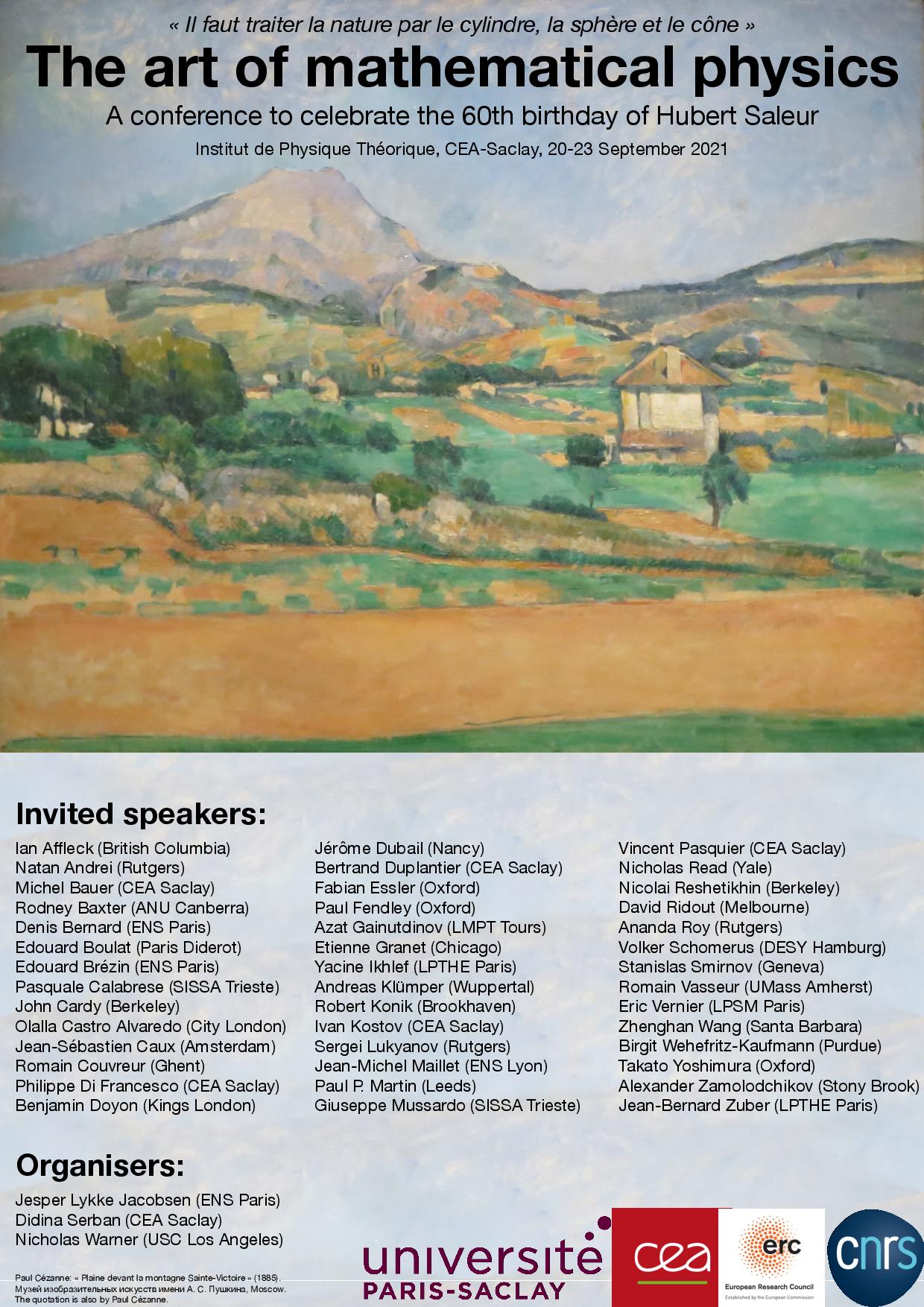
| Time | Monday 20 Sept | Tuesday 21 Sept | Wednesday 22 Sept | Thursday 23 Sept |
|---|---|---|---|---|
| 9:00 | Registration Check of Covid-19 certificates 9:20 - Opening comments (F. David and J. Jacobsen) |
J. Jacobsen | F. Essler | D. Bernard |
| 9:40 | J.-B. Zuber | Y. He | E. Boulat | I. Kostov |
| 10:20 | Coffee break | Coffee break | Coffee break | Coffee break |
| 10:40 | P. Fendley | B. Duplantier | J.-S. Caux | O. Castro-Alvaredo |
| 11:20 | D. Ridout (online) | S. Ribault | S. Smirnov | A. Gainutdinov |
| 12:00 | J. Dubail | P. Calabrese (online) | E. Granet | E. Vernier |
| 12:40 | Buffet lunch | Buffet lunch | Buffet lunch | Buffet lunch |
| 14:00 | V. Schomerus | P. Martin (online) | T. Yoshimura (online) | V. Pasquier |
| 14:40 | B. Wehefritz-Kaufmann (online) | A. Klümper | N. Andrei (online) | J.-M. Maillet (online) |
| 15:20 | Coffee break | Coffee break | Coffee break | Coffee break |
| 15:40 | Y. Ikhlef | G. Mussardo | R. Konik (online) | B. Pozsgay (online) |
| 16:20 | A. Roy | S. Lukyanov | R. Vasseur (online) | B. Doyon (online) |
| 17:00 | N. Reshetikhin (online) | Z. Wang (online) | N. Read (online) | P. Di Francesco (online) |
| 17:40 | J. Cardy (online) | I. Affleck (online) | P. Zanardi (online) | |
| 20:00 | Banquet dinner |
